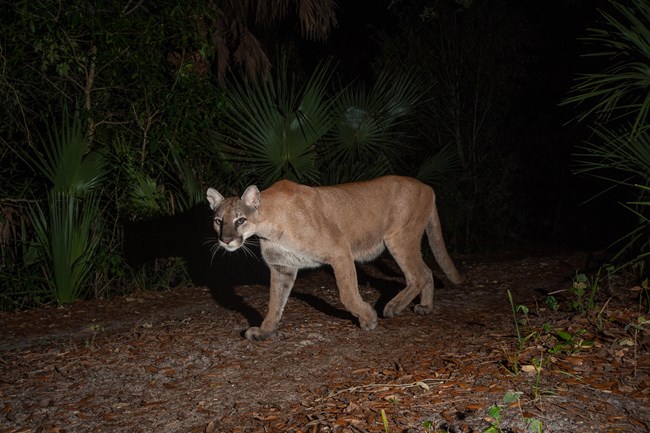Last updated: April 19, 2018
Article
Animals Need the Dark

Photo Credit: Ralph Arwood / all rights reserved
By protecting night skies, the NPS protects more than pretty views of the stars. It preserves wilderness qualities that animals depend on for survival. One way we do this is to reduce light pollution in parks. Light pollution is human caused light that alters natural light levels in the outdoor environment. Research into the ecological consequences of artificial night lighting is revealing numerous connections between light pollution and disruption to myriad species in almost all taxa.
Did you know?
- Highways, habitat and skies lit with artificial light interfere with the vision, foraging, and dispersal activities of many mammals.
- Hundreds of bird species use stars to navigate at night. Lights from nearby cities, towers, and other facilities disorient their migration and veer them off course, which cause them to slam into surfaces or circle endlessly, wasting crucial energy.
- Sea turtle hatchlings rely on the moon and starlight reflecting off the ocean at night to direct them to the safety of the water. After birth, they orient toward the brightest light on the beach. For baby sea turtles born on brightly lit beaches in developed coastal areas such as Florida, this can bring dire consequences: Instead of heading toward waves sparkling with moonlight, the turtles are often drawn toward brightly lit roads and parking lots, where they quickly die. Check out this video of young volunteers at Gulf Island National Seashore helping hatchlings on their journey to the sea.
- Artificial light interferes with amphibians, who detect light levels 100x dimmer than humans. Prolonged exposure to bright lights affects their hormones, skin coloration, thermoregulation, and reproduction.
- Many zooplankton feed near the surface of water bodies at night, and at the bottom of ponds, lakes and oceans by day to avoid predation. Artificial light causes them to stay at lower elevations, which affects animals up the food chain that subsist on them for food.
- Humans, too, need natural darkness for sound sleep and good health. Cool blue white light at night from sources such as LEDs, fluorescent and metal halide lights interfere with the body’s circadian rhythms by suppressing melatonin and increasing cortisol, a brain chemical released when we are stimulated or excited. High cortisol levels make it difficult to fall asleep or experience deep sleep, which our immune systems need to fight illness and disease.
What nocturnal animals are in your neighborhood?
North American nocturnal animals include:
- Aardvark
- Armadillo
- Badger
- Barn owl
- Bat
- Coyote
- Gray Wolf
- Hedgehog
- Luna moth
- Mink
- Mountain Lion
- Mouse
- Opossum
- Raccoon
- Red Fox
- Sea turtle
- Skunk
Select publications about light pollution impacts:
- AMA Report Affirms Human Health Impacts from LEDs
- Artificial Lighting on Sea Turtle Hatchling Behavior
- The Biological Impacts of Artificial Light at Night: the research challenge
- Ecological Light Pollution
- Information About Sea Turtles: Threats from Artificial Lighting
- Light at Night, Clocks and Health: from humans to wild organisms
- Missing the Dark: Health Effects of Light Pollution
Julie West, communications specialist, Natural Sounds & Night Skies Division
